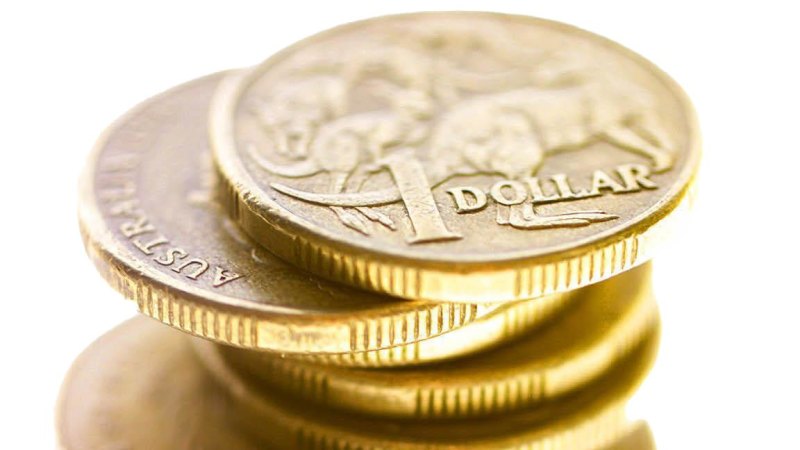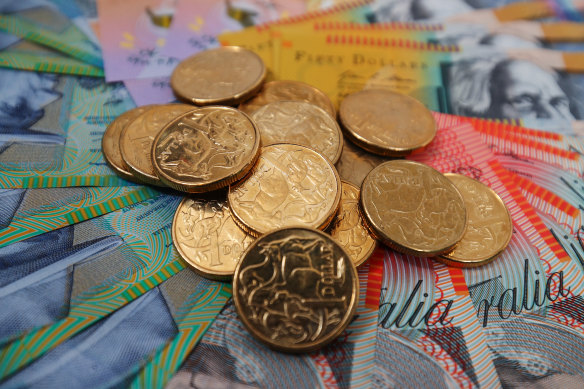Aussie dollar marks 40 years of resilience and China reliance

Save articles for later
Add articles to your saved list and come back to them any time.
The float of the Australian dollar 40 years ago today forged a shock absorber that helped the country weather decades of economic turbulence and to punch above its weight in global financial markets.
It may have been a tumultuous ride for what’s now one of the world’s most-traded currencies, but the highs and lows over four decades have shielded the resources-reliant economy from inflation pressures following commodity booms and helped boost exports during times of global crisis.
During the glory days of the mining investment boom, the Aussie traded above $US1.10.Credit: Bloomberg
Gone are the glory days of 2011 when the currency fetched above $US1.10 during a mining investment boom, a decade after plunging to its 47.8 US cents low as dot-com mania left Australia in the dust. The Aussie currently languishes around 66 US cents as the weaker outlook for key trading partner China, along with homegrown inflation pressures, weigh on its fortunes.
But the longer-term story is one of resilience.
Floating the Aussie was the single most important economic reform for generations, according to independent veteran economist Saul Eslake. At the time, Australia’s small, commodity-driven economy was at the mercy of global forces due to governments of the day keeping the currency high amid pressure from politically powerful agricultural groups.
‘There are a lot of economic questions on which I have a view that I hold with more than 50 per cent confidence. The view that the float was a good thing I hold with 100 per cent confidence.’
That meant the economy was far more vulnerable to surging inflation and subsequent downturns, Eslake said. Floating the dollar probably helped Australia avoid about five recessions, including after the China-led commodities boom of 2009-12, he estimates.
“Australia lives in a volatile environment by industrial country standards. Unusually for an advanced economy, we are an exporter of commodities and an importer of manufactured goods,” said Eslake.
“Something has to absorb that volatility, otherwise your economy will also be volatile. And the exchange rate has served that purpose.”
The snap decision on December 9, 1983, by then Prime Minister Bob Hawke and Treasurer Paul Keating to remove exchange controls allowed the government to embark on an economic overhaul that freed up the finance industry, cut tax rates and slashed tariffs. The Aussie was unleashed to the whims of markets on December 12.
For bankers, the newly-freed currency was uncharted territory. Volatility could often be extreme, sometimes leading to daily swings of as much as two cents, while traders considered rules around risk as guidelines at best. For those like Geoff Last, it could mean making or losing a fortune in minutes.
“They were wild times,” said Last, who was a 22-year-old currency trader at Westpac at the time. Making a million would earn a pat on the back, losing it would mean a visit from senior managers. But “unlike today, you still kept your job and the chance to make it back,” he said.
In those early post-float days, trades were agreed by voice-based methods, rather than electronically. In the interbank market, it would often take several calls to clear a trade above $150 million — by which point liquidity had vaporised and the day’s price ranges were estimates at best.
Things got tougher when the central bank ruled that a lender’s net spot exposure to the Aussie had to be within $20 million face value by end of the trading day – a rounding error in today’s market.
New Zealand soon followed Australia, floating its own dollar in 1985.
The perils for developed economies controlling their currencies in today’s markets were shown by Switzerland during Europe’s sovereign debt crisis.
The central bank’s 2011 decision to cap currency gains against the euro ended abruptly in 2015, causing massive disruption locally and globally when the franc’s value surged by a record.
Almost $US500 billion ($761 billion) worth of Aussie dollars are now traded each day, making it the world’s sixth most traded currency, according to latest available 2022 data from Bank for International Settlements.
That’s even as the country ranks as the world’s 14th biggest economy, according to the International Monetary Fund.
“There are a lot of economic questions on which I have a view that I hold with more than 50 per cent confidence,” said Eslake. “The view that the float was a good thing I hold with 100 per cent confidence.”
Bloomberg
The Business Briefing newsletter delivers major stories, exclusive coverage and expert opinion. Sign up to get it every weekday morning.
Most Viewed in Business
From our partners
Source: Read Full Article
